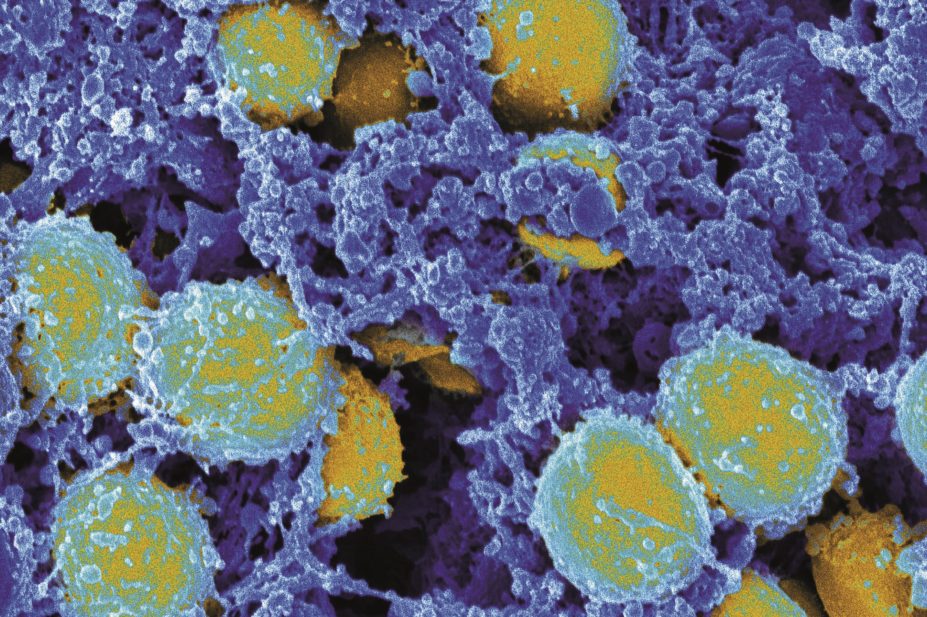
National Institute of Allergy and Infectious Diseases (NIAID)
Antibodies armed with antibiotics that can target and kill Staphylococcus aureus concealed in white blood cells are being developed by researchers at US company Genentech, according to a paper published in Nature
[1]
on 4 November 2015.
S. aureus infection is hard to treat, at least partly because the bacteria can hide inside phagocytes. Many potent antibiotic-like compounds fail in clinical practice owing to poor pharmacokinetic properties or undesired host toxicity. “The use of an antibody-antibiotic conjugate might be able to overcome these problems,” say the researchers.
The leading cause of bacterial infections in the world, S. aureus has a major impact in hospitals and in the community. It is becoming harder to treat as antibiotic-resistant strains, such as meticillin-resistant S. aureus (MRSA), emerge and spread. By ‘hiding’ in phagocytes, the bacteria are protected from antibiotics. The bacteria then use the white blood cells as ‘Trojan horses’ and spread to tissues throughout the body. As a result of this, treating invasive MRSA infections — including endocarditis, osteomyelitis, necrotising pneumonia and sepsis – with conventional antibiotics has a high failure rate, reaching up to 50%.
Antibody-drug conjugates have proved their worth in cancer chemotherapy, targeting toxic drugs directly to the cancer cells. This research project has created antibody-antibiotic conjugates, linking an antibiotic to an anti-S. aureus antibody via a linker molecule. The link is broken only when the conjugate is taken up into the phagocyte, which ensures that the antibiotic is released where it is needed.
In mouse studies, the conjugates killed S. aureus inside infected cells more effectively than doses of vancomycin, and prevented the infection transferring to other parts of the mouse’s body.
“This looks like an interesting approach, and tackles one of the problems of antibiotic resistance – the persistent bacteria that are hidden deep in the body,” says Colin Garner, chief executive of Antibiotic Research UK, a charity that aims to support the discovery and development of antibiotics against resistant bacteria. “The science reported in the Nature paper looks promising, and the principle could be applied to other resistant species, particularly the Gram-negative bacteria, but we will have to wait to see whether it reaches the clinic.”
Companies need to focus on developing drugs to target Gram-negative infections, since these are the hardest to treat. This approach has the potential to deliver other antibacterial compounds, including those that cannot be used alone because of issues of formulation or high levels of toxicity, which could meet this need. However, according to Garner, this does mean another challenge — the cost.
“New drugs and approaches like this are likely to be very expensive and kept as a last resort. Antibiotic resistance is a global issue, however, with a greater impact in the developing world,” he adds.
References
[1] Lehar SM, Pillow T, Xu M et al. Novel antibody–antibiotic conjugate eliminates intracellular S. aureus. Nature 2015. doi:10.1038/nature16057


